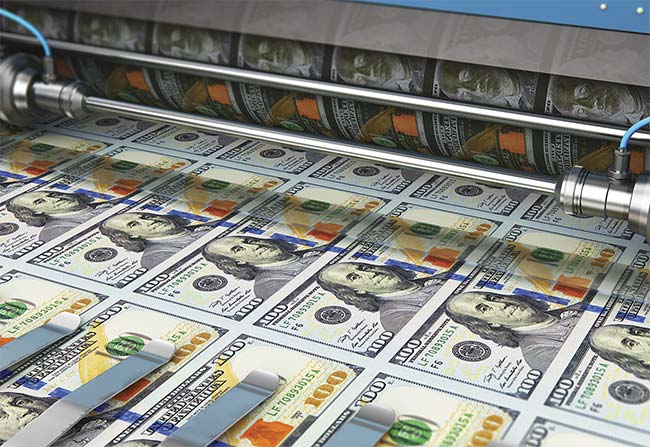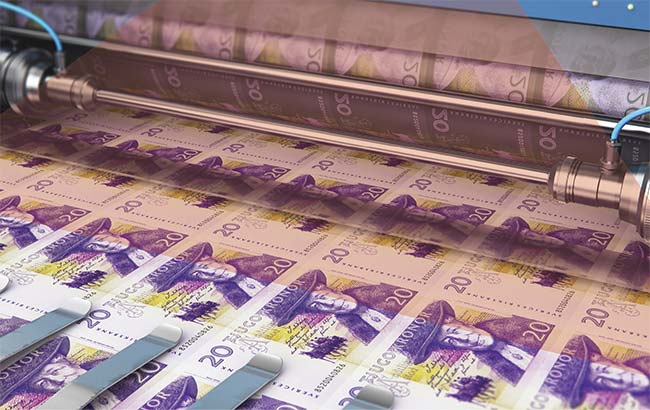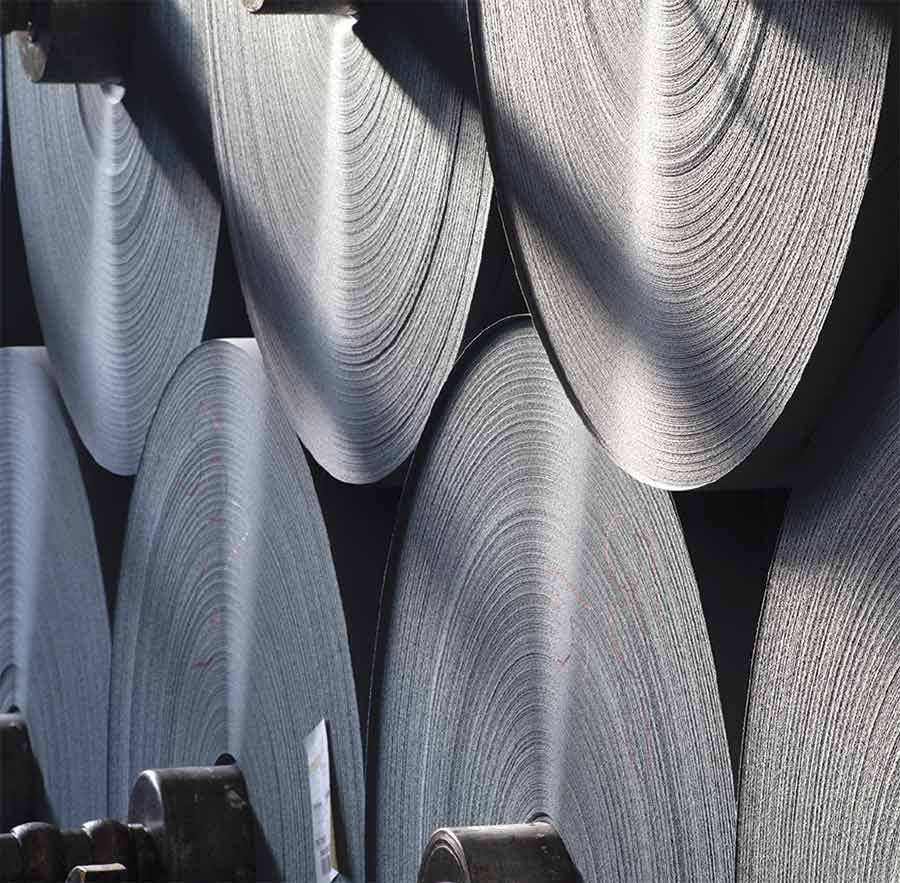There is more to a bank note than the numerical figures that appear on it. The elements that go unseen
by most are just as important as
the clearly visible information on the currency.
The U.S. dollar is considered among the easiest notes to forge because of its monochrome design. It features a security thread that glows under UV light and color-shifting ink that changes color when the note is tilted. One-hundred-dollar notes also feature a 3D security ribbon. The Swiss franc, however, is among the most difficult to forge because it contains over 70 distinct security features.

The U.S. dollar is considered one of the easiest bank notes to forge, despite its security features, which include a thread that glows under UV light and color-shifting ink that changes when the note is tilted. To prevent forgeries, various types of inks are used. Holograms may also be included as part of the substrate material used to make the notes.
Inspectors who are trained to identify forged or doctored bank notes rely on the embedded security features of legitimate currency in order to gain an advantage in the battle with sophisticated counterfeiters. Before legal tender enters circulation, it is inspected during the manufacturing process to ensure its quality, as well as to verify its embedded security features that will distinguish real bank notes from fakes.
While hallmark features such as
watermarks and raised inks may become visible when a bank note is tilted or held up to a light source, other security features — such as printed line structures, microprinted features, and embedded elements — cannot be
seen with the naked eye. These more subtle features, which are incorporated during printing, are evaluated by inspectors using multispectral imaging technology.
For maximum efficiency, multispectral imaging capabilities are built into automated visual inspection systems, allowing multiple stages of inspection to occur without interruption during the many phases of manufacture.
While a move toward digital currency has gained momentum, a high level of inspection of paper money remains critical to the safety and efficiency of global commerce.

Inspection at every stage
A bank note and its design undergo many processes before the note enters circulation, including a proof stage to verify that the printing plates are ready for production. The printers then impart individual elements of a note — such
as various colors and markings — at different stages of the printing process.
The printing process starts with a blank roll of material and ends with the cutting and packaging of notes. In between, the paper material advances through stages of silkscreen printing, high-resolution intaglio printing, and letterpress printing. Inspections are performed at each stage.
“A bank note is an extremely complex structure,” said Paritosh Prayagi, director of product management at JAI A/S, a developer and manufacturer of industrial camera solutions. Multiple types of ink, such as fluorescent and visible inks, as well as holograms that are part of the substrate material used to make the notes, are among the tools that printers use to produce intricate notes that cannot be forged.
The wide range of features used in bank note security requires that the inspection systems contain multiple types of cameras to most effectively image various characteristics.

Bank note inspection begins early in the manufacturing process, before the notes are printed and cut. The printing process starts with a blank roll of material. Visual inspections are performed on the material during each of the stages of silkscreen printing, high-resolution intaglio printing, and letterpress printing.
“Depending on what needs to be inspected, the type of vision system changes,” Prayagi said. By using a standard RGB camera, for example,
inspectors can visualize traits such as serial numbers, colors, hidden structures, and line patterns. Line-scan cameras, which capture images in quick succession, are used at the
roll-to-roll printing stage, before
massive quantities of paper are segmented into sheets and, eventually, individual notes.
Because standard RGB cameras are unable to inspect security features in the NIR and UV bands, the use of a multispectral camera is required for detection in these bands.
Imaging complexity
The complexity of the distinct inspection tasks that take place in bank note manufacturing poses a challenge even for advanced imaging systems. And
security features themselves are
complex and numerous in type.
“There is a big trend in the bank note market to go infrared,” Prayagi said. Inks and other features that are sensitive to NIR light are gaining favor among note designers.
Inspection systems are advancing accordingly.
“You still have color elements on the bank notes, so it makes sense to combine visible, NIR, and also, potentially, UV imaging capabilities,” he said. “You have this very broad range of spectral imaging that you want to combine on a single camera head.”
Bank note designers cannot include advanced security features, however, unless the imaging technology to test and then accurately detect them is available.
“If you have a bank note that contains all of these features that are sensitive in the NIR, the visible, and the UV, and if you don’t have a system to inspect those kinds of security features, you leave them to speculation,” Prayagi said.
Another option is to inspect each advanced security feature separately.
“But that raises questions of efficiency and process complexity,” he said. “Having a single multispectral solution that can scan all the important security features in a single pass of the object is more process-efficient than having to set up a new inspection unit for each security feature.”"
Multispectral solutions
Multispectral technology allows inspectors to perform detailed inspections without the need to modify equipment and delay throughput. According to Prayagi, prism-based multisensor cameras from JAI enable simultaneous imaging in the visible and NIR ranges.
In these multisensor cameras, a prism block functions as multiple filters, redirecting spectral ranges to four
different sensors that each correspond to a spectral band. For quality assessment and defect detection, character-
istics of the security features that are seen through the different spectral bands can be compared. Correlation of these characteristics helps to accurately identify the position and size of security features, as well as any defects.
Vision systems used for bank note inspection are complex, Prayagi said. They include several different cameras, and inspectors need to generate useful visual data from all of them to arrive at a result. Image processing is used to optimize images obtained from these systems.
Multispectral NIR fluorescence imaging cameras are also deployed for inspections that require NIR-specific detection, he said. JAI’s Flex-Eye
technology is customizable, including for bank note inspection purposes.
The technology combines a prism-based multispectral area-scan camera with a custom design process. Users specify the sensor resolution and
the preferred spectral range for each channel in their camera.
The number of wave bands is also customizable on these area-scan
cameras. However, an excess number of bands — which can be a characteristic of multispectral cameras that feature a large range of spectral bands — limits the speed at which detailed images can be obtained.
“The key is to simplify the imaging process,” Prayagi said. “And that’s where having a multispectral camera with multiple sensors is helpful from the technology perspective.”
Maximum security
Bank note printing and inspection processes are highly secretive to help prevent forgeries and counterfeits.
This raises another challenge for camera developers.
“The people in the bank note business don’t tell you what they are doing, exactly. They only tell you what they need,” Prayagi said. “What they are going to do with a certain band, or certain imaging, is something you either try to test or you speculate [about].”